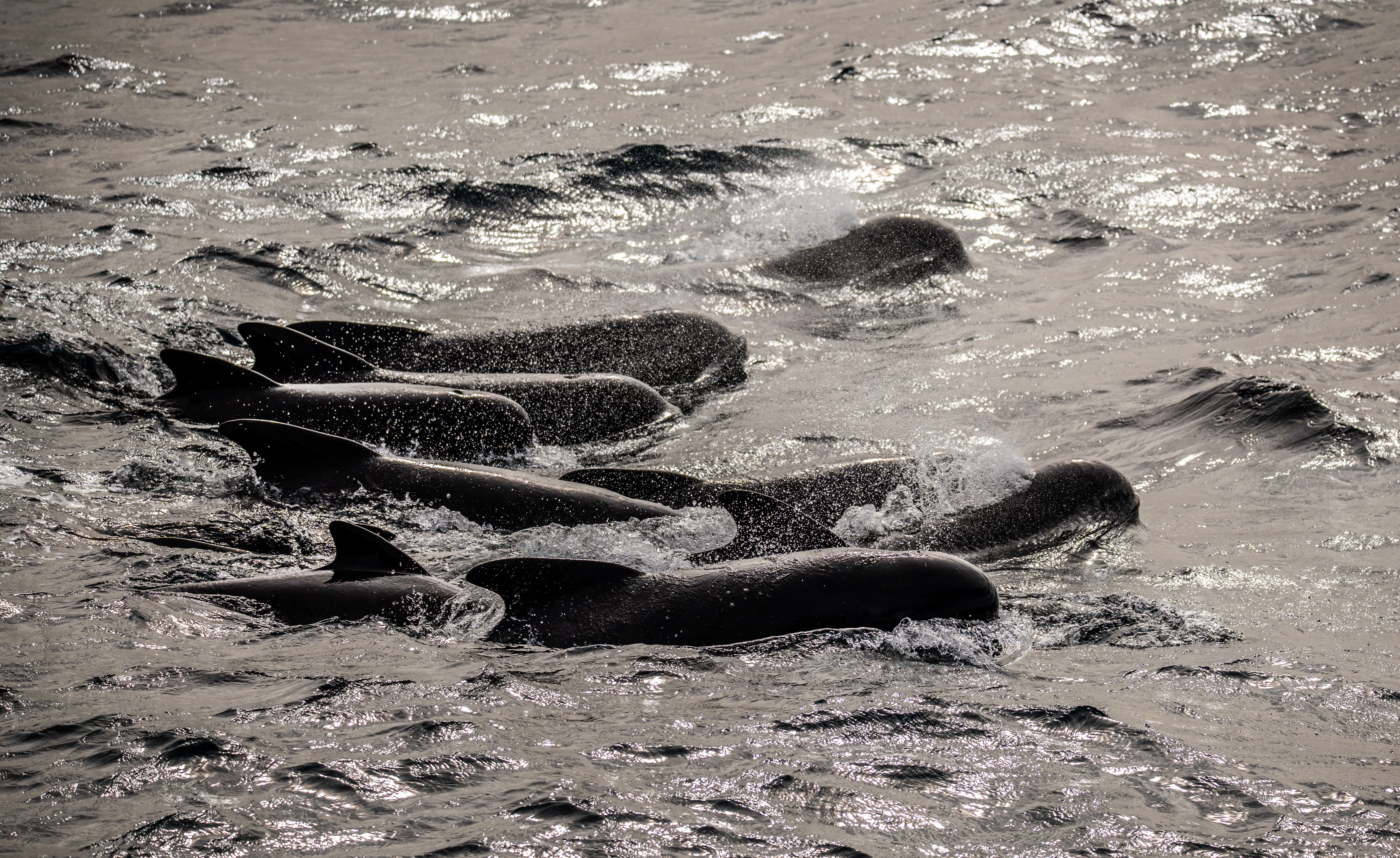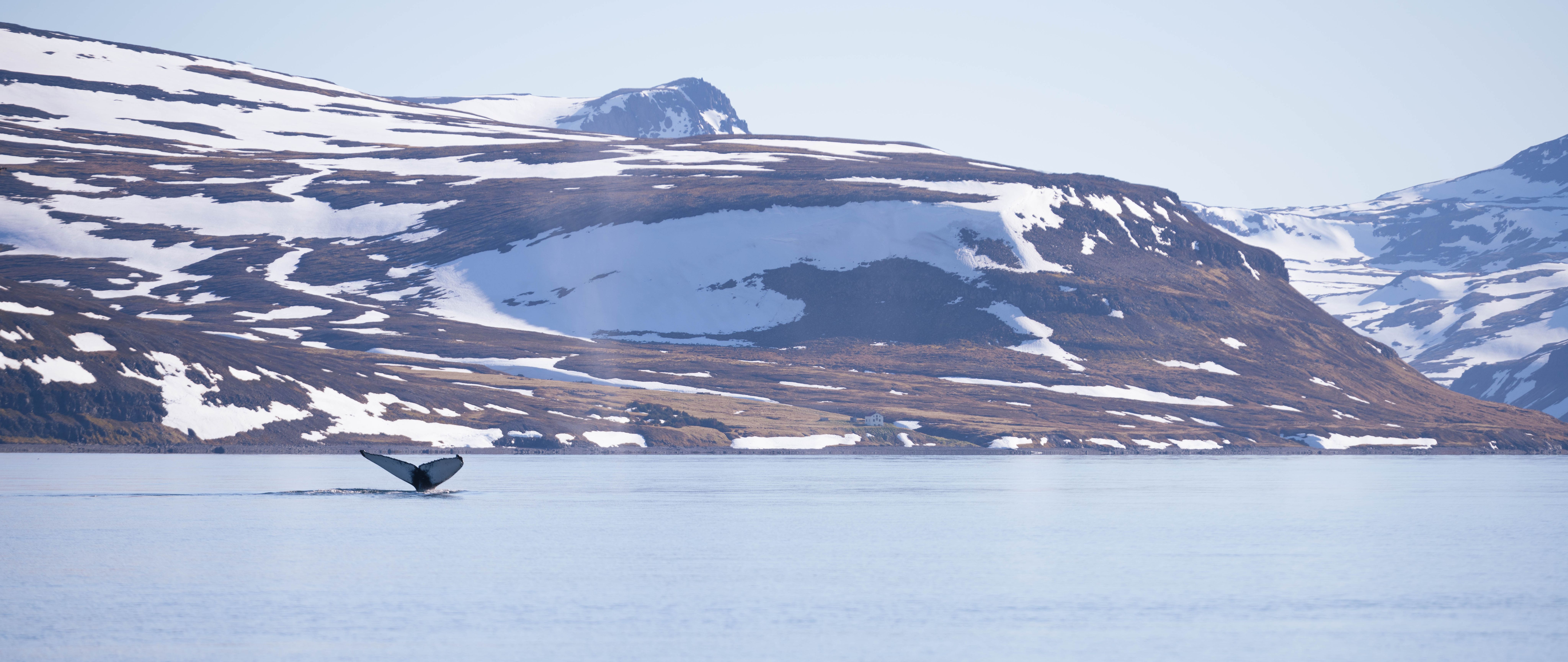Sailing from Bergen to Los Angeles offered a rare opportunity to combine traditional observation with cutting-edge technology, mapping marine mammals across thousands of nautical miles.
Natacha Fabregas and Lucie Cassarino are science coordinators on board Statsraad Lehmkuhl. Together with Francisco Amor Roldán they have structured and analysed all the sightings of marine mammals during the six months long voyage.

– All the visual observations are carefully written down by the persons standing at lookout and at the buoy watch, explain the researchers, and this allows us to compile a full map of marine mammals’ distribution along the route of the expedition, they write in their preliminary report.

On the map above all the sightings are marked. Whales as red squares, dolphins as blue, and turtles as green half-circles. Among the many observations were minke whales north of Iceland, humpback whales in Iceland’s Jökulfirðir fjord, as well as pilot whales and common dolphins.
Hearing the whales
Tall ship Statsraad Lehmkuhl is a silent ship. When sailing, there is no engine noise, perfect conditions if you want to eavesdrop on what's going on in the ocean. The ship is equipped with three hydrophones - underwater microphones that record sounds beneath the hull.
– Thanks to the hydrophones, we managed to listen to those marine mammals as well, the team writes.
Before analysing these recordings, the researchers carefully identified which sounds came from the ship’s own acoustic instruments, such as the ADCP measuring ocean currents and the echosounder - and which came from the animals themselves.
When they isolated the voices of the whales, the results were remarkable. In one recording, the humpback whale seen in the Icelandic fjord can be heard emitting powerful clicks and calls, echolocating to navigate and communicate.
The sounds can be seen with colour variations on the spectrogram below. Click to play the video, and turn the sound up!
The pilot whales fill the water with whistles, visible as undulating patterns in the recording above; while clicks appear as sharp vertical lines. These recordings offer a vivid glimpse into the acoustic world that surrounds the ship, usually hidden from human ears.
Temperature and distribution
By combining acoustic and visual sightings with environmental data, the researchers can explore how temperature influences the distribution of marine mammals.
The ship’s continuous measurements of sea surface temperature revealed distinct patterns on the leg from Iceland to Nice.

– Baleen whales like minks, and humpbacks are observed in lower temperatures, the team notes, while dolphins and sperm whales were mostly recorded in warmer waters of the Iberian margin and western Mediterranean.
Pilot whales, they add, were found across a wider temperature range, consistent with their global distribution.
Although the dataset is still growing, these early results suggest how environmental conditions influence where different species are likely to appear, and what scientists might expect to hear in future hydrophone recordings.
A symphony of the ocean
By combining direct observation and acoustic monitoring, Statsraad Lehmkuhl acts as a floating listening post for the ocean. From the Arctic waters north of Iceland to the temperate seas near southern Europe, the ship’s instruments and observers have revealed the ever changing soundscape of the sea.
This research not only helps scientists understand where marine mammals live, but also how they communicate and respond to changes in their environment.
The work is not yet complete, as the expedition continues, every sighting, every sound, and every temperature reading adds another note to a growing symphony of the ocean.







































